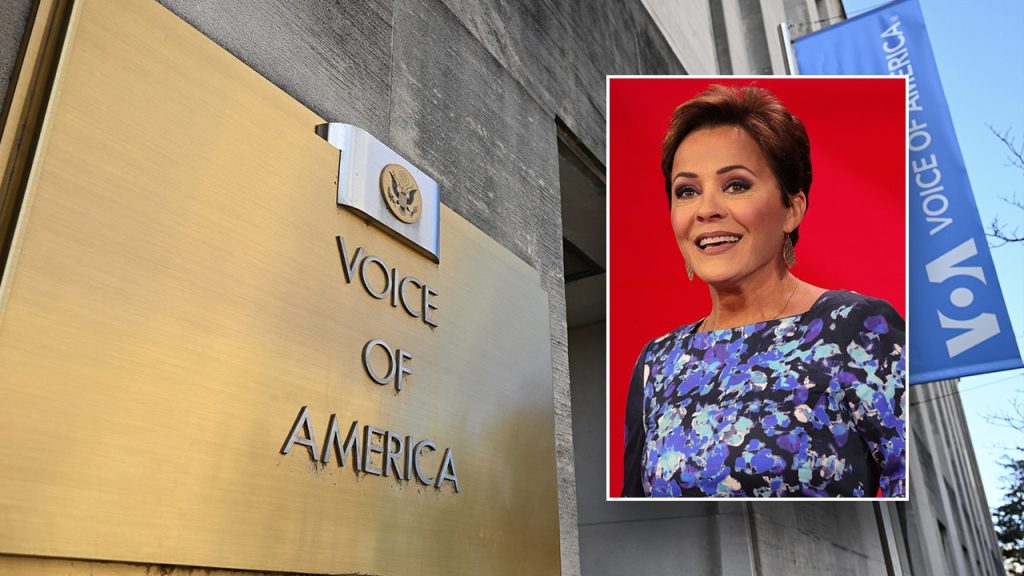A recent legal development has favored the Trump administration regarding the operations of the U.S. Agency for Global Media (USAGM) and its subsidiary, the Voice of America (VOA). The U.S. Court of Appeals for the D.C. Circuit issued a stay on a previous court order that mandated the reinstatement of over 1,000 VOA employees and the restoration of full broadcasting operations. This ruling underscores the administration’s intentions to restructure USAGM ahead of its goals to modernize the agency and curb perceived inefficiencies.
| Article Subheadings |
|---|
| 1) Court Ruling Significance |
| 2) Impact on VOA Employees |
| 3) Historical Background |
| 4) Administration’s Response |
| 5) Future Implications |
Court Ruling Significance
The recent ruling by the U.S. Court of Appeals for the D.C. Circuit is a significant legal victory for the Trump administration. The court issued a stay against a lower court’s order, which had mandated the reinstatement of over 1,000 employees from the VOA, along with the restoration of its full broadcasting capabilities. This decision highlights the judiciary’s respect for executive authority concerning personnel decisions and management of federal broadcasting operations.
In a 2-1 vote, the appellate court stated that the district court had likely overstepped its jurisdiction by intervening in matters best managed by the executive branch. The ruling reinforces the administration’s ability to restructure the USAGM, paving the way for proposed changes aimed at efficiency and modernization.
Impact on VOA Employees
The ruling’s implications for VOA employees are substantial. Prior to this decision, about 1,300 employees had been placed on administrative leave following an executive order in March aimed at significantly altering the agency’s operations. The order effectively halted broadcasting activities for the first time in VOA’s 83-year history.
In explaining the judicial decision, officials, including Kari Lake, a USAGM senior advisor, emphasized that the past legal challenges hampered necessary reforms. The court’s ruling now allows the administration to move forward with its agenda to address what it considers inefficiencies and outdated practices within VOA.
Historical Background
The controversy surrounding the VOA dates back to March 14, when President Trump issued an executive order aimed at dismantling operations within the USAGM. Critics argued that the agency, which is meant to serve as a global broadcaster and provide accurate news coverage, had strayed from its original mission. A senior White House official described the VOA as “out of step with America,” labeling it as a source of “divisive propaganda.”
This executive action led to the suspension of multiple contracts and significant personnel changes, ultimately affecting the agency’s ability to deliver news and information effectively. Legal challenges swiftly followed, with employees filing a lawsuit against the administration in a bid to contest the actions taken against them.
Administration’s Response
The Trump administration has viewed the appeals court ruling as a validation of its policies and vision for USAGM. Kari Lake articulated her perspective on the matter, stating, “This is a huge victory for President Trump and his Article II powers granted in the United States Constitution.” She reiterated the administration’s intent to modernize the agency and eliminate wasteful practices that have allegedly plagued it for years.
Legal analysts have similarly discussed the implications of the court’s ruling. Notable opinions from figures within the legal community have echoed Lake’s sentiments, with constitutional law experts pointing to the ruling as a pivotal moment in favor of the Trump administration’s approach to federal employment decisions.
Future Implications
The decision by the D.C. Circuit is likely to have lasting implications on the operation and governance of USAGM and VOA. As the administration implements its restructuring plans, it can focus on enhancing the efficiency and relevancy of its broadcasting services while minimizing what officials have described as “redundant programs.”
Looking ahead, this ruling opens the door for renewed dialogue regarding the role of state-funded media in the United States, particularly regarding its accountability and alignment with the government’s objectives. With plans to bring VOA into the 21st century, the administration faces both challenges and opportunities in navigating public perception and operational mandates moving forward.
| No. | Key Points |
|---|---|
| 1 | The Court of Appeals issued a stay on a lower court’s decision to reinstate VOA employees. |
| 2 | Approximately 1,300 employees were placed on administrative leave following an executive order. |
| 3 | The ruling highlights the judiciary’s deference to executive power over federal employment. |
| 4 | Administration officials see the ruling as an affirmation of their restructuring agenda. |
| 5 | The future of USAGM and VOA will involve significant operational changes and modernization efforts. |
Summary
This recent court ruling represents a pivotal moment in the ongoing debate about federal broadcasting operations in the United States. With the D.C. Circuit’s decision to support the Trump administration’s restructuring efforts at the USAGM and the VOA, significant changes are on the horizon. The ruling not only has immediate consequences for the agency’s workforce but also raises broader questions about the future direction of state-funded media in the country.
Frequently Asked Questions
Question: What is the role of the Voice of America?
The Voice of America (VOA) serves as a U.S. government-funded international broadcaster, providing news and information across the globe, with a focus on delivering unbiased reporting.
Question: Why were employees placed on administrative leave?
Employees were placed on administrative leave as a result of an executive order issued by President Trump, which aimed to restructure the USAGM and its operations.
Question: What does the appeals court ruling allow the administration to do?
The appeals court ruling allows the Trump administration to proceed with its plans to restructure the USAGM, including altering personnel decisions and broadcasting operations.


